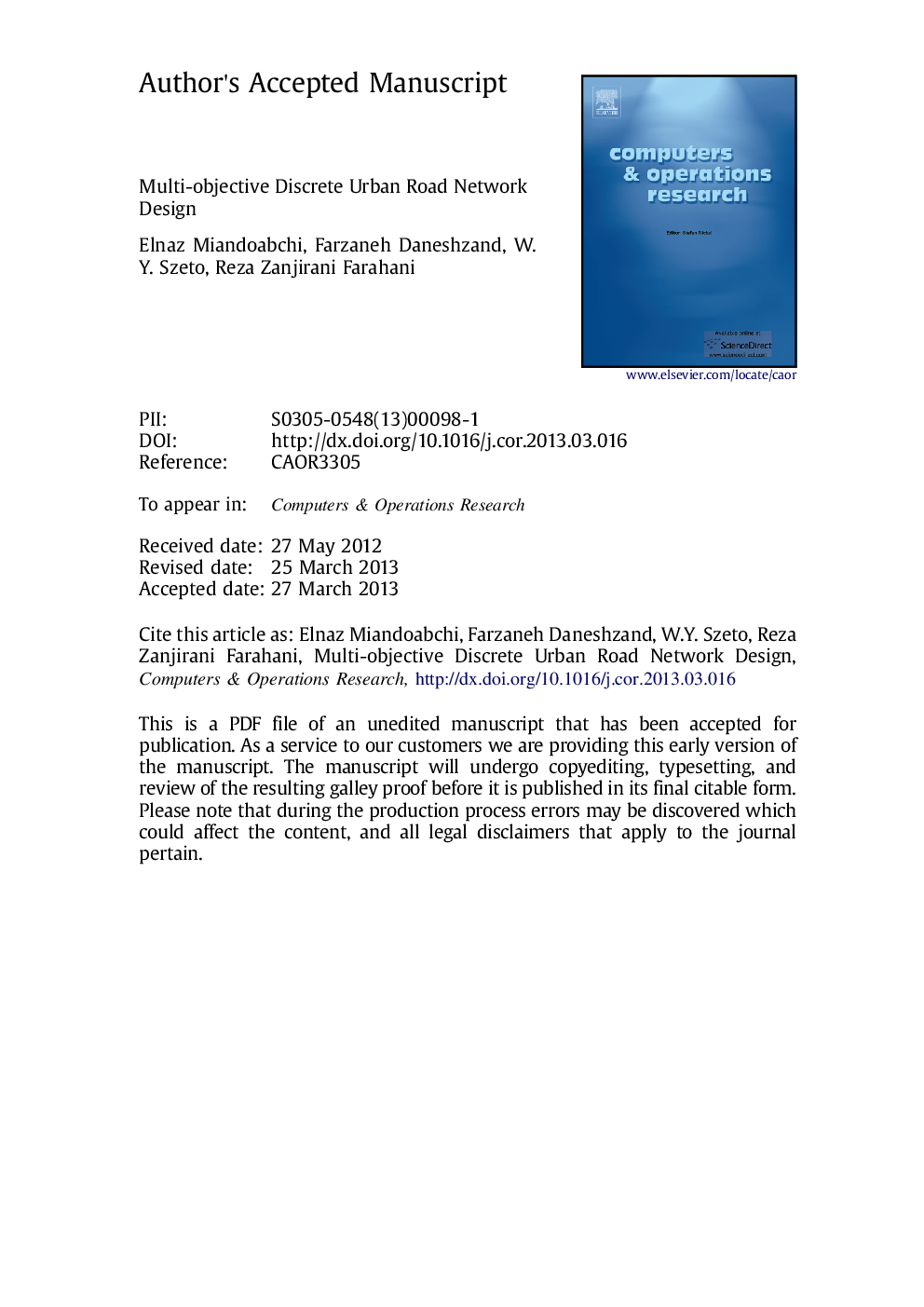| Article ID | Journal | Published Year | Pages | File Type |
|---|---|---|---|---|
| 10348028 | Computers & Operations Research | 2013 | 46 Pages |
Abstract
This paper addresses the problem of designing urban road networks in a multi-objective decision making framework. Given a base network with only two-way links, and the candidate lane addition and link construction projects, the problem is to find the optimal combination of one-way and two-way links, the optimal selection of network capacity expansion projects, and the optimal lane allocations on two-way links to optimize the reserve capacity of the network, and two new travel time related performance measures. The problem is considered in two variations; in the first scenario, two-way links may have different numbers of lanes in each direction and in the second scenario, two-way links must have equal number of lanes in each direction. The proposed variations are formulated as mixed-integer programming problems with equilibrium constraints. A hybrid genetic algorithm, an evolutionary simulated annealing, and a hybrid artificial bee colony algorithm are proposed to solve these two new problems. A new measure is also proposed to evaluate the effectiveness of the three algorithms. Computational results for both problems are presented.
Related Topics
Physical Sciences and Engineering
Computer Science
Computer Science (General)
Authors
Elnaz Miandoabchi, Farzaneh Daneshzand, W.Y. Szeto, Reza Zanjirani Farahani,
